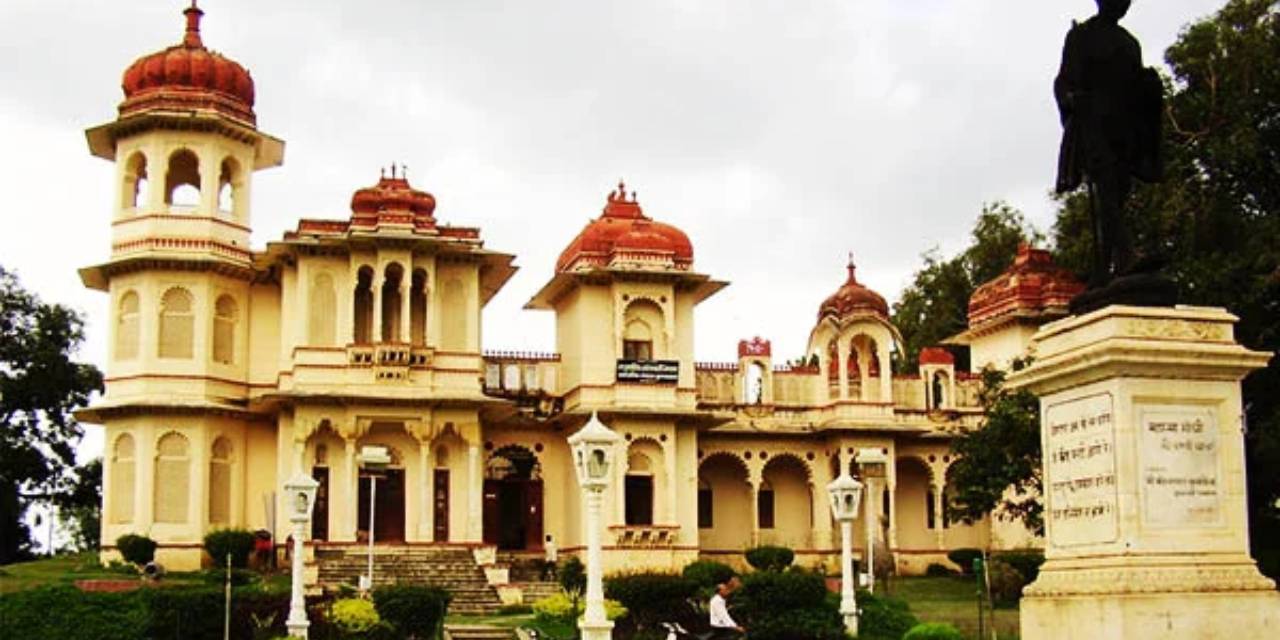
Entry Fees :- INR 25 Per Person
Timing :- 8:00 am – 6:00 pm
Year of Establishment :- 18th Century
Best Time To Visit :- October to February
History
Gulab Bagh, also known as Sajjan Niwas Garden, was built by Maharana fateh Singh in the 1887. It is the fourth oldest zoo in the semi-continent. It spans across 66 acres of land, and is hailed as one of the most beautiful and largest garden in Rajasthan By Maharana's volition, a horticulturist from Madras, T.H. Story, was appointed in 1882 to stock the garden with plants with medicinal values on the 66.5 acres of land and worked there until 1920.
The garden featured a Lotus Pond and an array of prominent trees, including various species of mangoes, guava, grapes, lemon, bor, mulberry, rayan, pomegranate, bananas, sapota, tamarind, bullock's heart (ramphal), lichi, arjun trees, wood apple, karonda, campher, citron, jamun, pummelo, meetha neem, kargi lime, ficus species, anola, jackfruit, dhanverjia, grandi flora, jasmine, dawood, and more. In 1882, each tree had nameplates indicating Hindi, English, and systematic botanical names, which may have changed over time. A small pond previously existed in the garden before being demolished for the Water Works complex. In this pond, a water lily of the Victoria species was initially planted. The leaf of the Victoria water lily could support the weight of a child sitting on a chair placed upon it, a characteristic shared by all water lilies of the genus due to their structural properties.
Maharana Sajjan Singh laid the foundation stone of the Victoria Museum, now known as the Saraswati Bhawan Library, in the garden on November 2, 1890. The museum was inaugurated by Lord Lansdowne. Mr. Gauri Shankar Ojha served as the first curator of the museum, appointed in 1890. It housed numerous rare artifacts and stone manuscripts dating from the 3rd century B.C. to the 17th century A.D.
The garden hosted various Flower and Vegetable shows, beginning with the first one in 1888 organized by Maharana Fateh Singh. Additionally, the zoo arranged fights for entertainment between lions or tigers and wild boars. Over its five-decade span, the zoo expanded to include numerous rare species, such as Black Leopards, Rhinos, Ostriches, Zebras, hoolock gibbons, and more. Following Independence, many of these animals were transferred to other zoos across India.
Places of interest within
Saraswati Library:- Gulab Bagh features the Saraswati Library, formerly known as Victoria Hall Museum, Rajasthan's first museum established by Maharana Fateh Singh in 1887. Opened to the public on November 1, 1890, it was later relocated to the City Palace in 1968 and renamed Pratap Museum. The museum's original building was converted into a public library. It remains renowned for its collection of antiques, curios, royal household items, and other relics. The library boasts over 32,000 books on history, archaeology, Indology, and manuscripts dating back to the early medieval period. Its RRLF section contains 26,215 books, while the children's section houses 3,800 books. Upon registration, patrons can borrow books for a 14-day period. Additionally, the library houses a large marble idol of Queen Victoria, initially placed in the garden outside. However, after independence in 1948, the statue was replaced with one of Mahatma Gandhi to commemorate the triumph of nationalism.
Navlakha Mahal:- Gulab Bagh has a Navlakha Mahal or Navlakha Palace, which is a religious place for Arya Samaj. This is situated at the center most area of the entire garden. This is considered to be one of the places where Dayananda Saraswati, the founder of Arya Samaj had spent his spiritual life. Swami Dayanand made correction to his book Satyarth Prakash at Navlakha Mahal and printed the second edition in Samvat 1939 (1882 CE).
Toy Train:- There is also a small train that meanders within the zoo. It is open for kids as well as adults, and there is a nominal fees for the ride. The train station is named as Luv Kush Railway Station.
Gulab Bagh Zoo:- Within the garden, a zoo lies just a short walk away, surrounded by rose plants and open parks. Though relatively small, the zoo is home to animals and birds of various species, housed in cages. Despite its size, children find ample enjoyment as they eagerly crane their necks to catch glimpses of tigers, bears, and other fascinating creatures.
Kamal Talai :- Towards the northeastern end of Gulab Bagh lies a vast artificial water body known as Kamal Talai. Shaped like an oval, it features four bridges connecting at the central junction, adding to its scenic charm.
